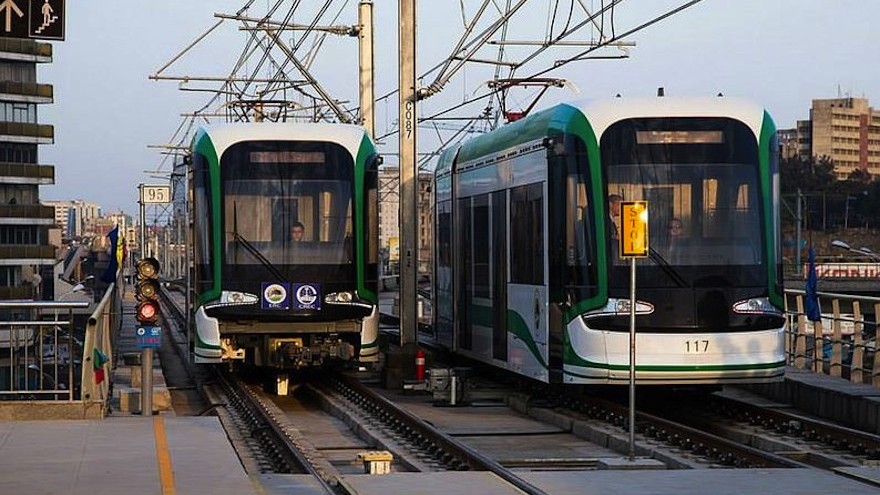Addis Gets Metro
Ethiopia’s fast evolving infrastructure scene has gotten a major boost with the introduction of the country’s, and Sub-Saharan Africa’s, first modern light railway system. The $475 million project was financed in part by the Exim Bank of the China. The project comes at a time when Ethiopia is experiencing rapid growth as the country seeks to position itself as major manufacturing hub that will c o mp e t e w it h t he l e ading g l o b al manufacturing centres such as those located in Asia. Addis Ababa, the nation’s capital, has itself been in a state of rapid growth as the government has mounted a major infrastructure push. Such efforts will be essential to expand the supply of the city’s infrastructure stock as population growth and rural-urban migration will begin to drive the demand for public services and infrastructure.

The light rail commenced operations in late 2015 has and 39 stations and carries over 200,000 riders per day. Authorities want the system to be able to carry up to 60,000 passengers per hour when all the four lines of the system are operational. The railway system currently has two lines, a Blue and Green line, totaling 32 Kilometers and connects the city’s central business district with industrial areas around the city. Authorities are planning to expand the rail network beyond the current four lines into all four directions of the city. The project is being operated by China’s Shenzhen Metro group which will operate the project before transferring Ethiopian Railways Corporation. The partnership between the Chinese and Ethiopian partners will be used to provide skills transfer and technical capacity building. The Ethiopian government has built an electrical system to supply the project with its own power to operate the system. The project has been recognized b y t h e U n i t e d N a t i o n s a s a n environmentally friendly project.
The project is expected to deliver myriad benefits to Ethiopia’s residents. The system will likely push down the cost of public transit and make connectivity around the city seamless. The system’s f a r e s a r e t h e a m o n g t h e l o w e s t transportation fares in Addis Ababa. The project will also provide an essential boost to the urban renewal and regeneration projects across Addis Ababa by extending the reach of such projects around the city as the rail network grows. It will also ease the congestion pressures Addis Ababa is facing as its population grows. Moreover, it would also be expected that the project will deliver the productivity benefits that come with more efficient mass transit systems. Meanwhile, other African cities have begun to develop similar projects including Lago’s system which as been marred by delays. The Lagos light rail system is meanwhile still in under construction. It will be interesting to watch how the race to build similar mass transit projects will evolve across Africa.

